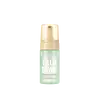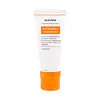What's inside
What's inside
 Benefits
Benefits

 Concerns
Concerns

 Ingredients Side-by-side
Ingredients Side-by-side

Water
Skin ConditioningCocamidopropyl Betaine
CleansingPotassium Cocoyl Glycinate
Glycerin
HumectantSodium Cocoamphoacetate
CleansingPolyglyceryl-4 Caprate
EmulsifyingPanthenol
Skin ConditioningPropylene Glycol
HumectantPhenoxyethanol
PreservativeAroma
Xylitylglucoside
HumectantAloe Barbadensis Leaf Extract
EmollientArtemisia Vulgaris Extract
Skin ConditioningHouttuynia Cordata Extract
Skin ConditioningPEG-150 Distearate
EmulsifyingAnhydroxylitol
HumectantXylitol
HumectantEthylhexylglycerin
Skin ConditioningBenzotriazolyl Dodecyl P-Cresol
UV AbsorberCitric Acid
BufferingGlucose
HumectantGlyceryl Acrylate/Acrylic Acid Copolymer
HumectantPvm/Ma Copolymer
Emulsion StabilisingMaris Aqua
HumectantSodium Benzoate
MaskingPotassium Sorbate
PreservativePropanediol
SolventEmiliania Huxleyi Extract
Skin ConditioningWater, Cocamidopropyl Betaine, Potassium Cocoyl Glycinate, Glycerin, Sodium Cocoamphoacetate, Polyglyceryl-4 Caprate, Panthenol, Propylene Glycol, Phenoxyethanol, Aroma, Xylitylglucoside, Aloe Barbadensis Leaf Extract, Artemisia Vulgaris Extract, Houttuynia Cordata Extract, PEG-150 Distearate, Anhydroxylitol, Xylitol, Ethylhexylglycerin, Benzotriazolyl Dodecyl P-Cresol, Citric Acid, Glucose, Glyceryl Acrylate/Acrylic Acid Copolymer, Pvm/Ma Copolymer, Maris Aqua, Sodium Benzoate, Potassium Sorbate, Propanediol, Emiliania Huxleyi Extract
Water
Skin ConditioningPotassium Cocoyl Hydrolyzed Oat Protein
Skin ConditioningGlycerin
HumectantCocamidopropyl Betaine
CleansingPotassium Cocoyl Glycinate
PEG-120 Methyl Glucose Dioleate
EmulsifyingButylene Glycol
HumectantHippophae Rhamnoides Extract
MaskingXanthan Gum
EmulsifyingHouttuynia Cordata Extract
Skin ConditioningPanthenol
Skin ConditioningSodium PCA
HumectantDipotassium Glycyrrhizate
HumectantChlorphenesin
AntimicrobialAllantoin
Skin ConditioningDisodium EDTA
Capsicum Annuum Extract
MaskingDaucus Carota Sativa Extract
PerfumingWater, Potassium Cocoyl Hydrolyzed Oat Protein, Glycerin, Cocamidopropyl Betaine, Potassium Cocoyl Glycinate, PEG-120 Methyl Glucose Dioleate, Butylene Glycol, Hippophae Rhamnoides Extract, Xanthan Gum, Houttuynia Cordata Extract, Panthenol, Sodium PCA, Dipotassium Glycyrrhizate, Chlorphenesin, Allantoin, Disodium EDTA, Capsicum Annuum Extract, Daucus Carota Sativa Extract
 Reviews
Reviews

Ingredients Explained
These ingredients are found in both products.
Ingredients higher up in an ingredient list are typically present in a larger amount.
Cocamidopropyl Betaine is a fatty acid created by mixing similar compounds in coconut oil and dimethylaminopropylamine, a compound with two amino groups.
This ingredient is a surfactant and cleanser. It helps gather the dirt, pollutants, and other impurities in your skin to be washed away. It also helps thicken a product and make the texture more creamy.
Being created from coconut oil means Cocamidopropyl Betaine is hydrating for the skin.
While Cocamidopropyl Betaine was believed to be an allergen, a study from 2012 disproved this. It found two compounds in unpure Cocamidopropyl Betaine to be the irritants: aminoamide and 3-dimethylaminopropylamine. High-grade and pure Cocamidopropyl Betaine did not induce allergic reactions during this study.
Learn more about Cocamidopropyl BetaineGlycerin is already naturally found in your skin. It helps moisturize and protect your skin.
A study from 2016 found glycerin to be more effective as a humectant than AHAs and hyaluronic acid.
As a humectant, it helps the skin stay hydrated by pulling moisture to your skin. The low molecular weight of glycerin allows it to pull moisture into the deeper layers of your skin.
Hydrated skin improves your skin barrier; Your skin barrier helps protect against irritants and bacteria.
Glycerin has also been found to have antimicrobial and antiviral properties. Due to these properties, glycerin is often used in wound and burn treatments.
In cosmetics, glycerin is usually derived from plants such as soybean or palm. However, it can also be sourced from animals, such as tallow or animal fat.
This ingredient is organic, colorless, odorless, and non-toxic.
Glycerin is the name for this ingredient in American English. British English uses Glycerol/Glycerine.
Learn more about GlycerinHouttuynia Cordata Extract is more commonly known as Heart Leaf, Fish Mint, or Chameleon plant.
The components found in Heart Leaf give it antioxidant, hydrating, antimicrobial, and anti-inflammatory properties.
Heart Leaf is rich in flavonoids such as quercetin, apigenin, and more. It also contains polysaccharides, the most common type of carbs in food.
Flavonoids have been shown to be effective antioxidants. They help neutralize free-radical molecules. Free-radical molecules are unstable molecules that may damage our skin cells and DNA. The flavonoids in Heart Leaf also help soothe the skin.
Polysaccharides are naturally found in our skin. They play a role in hydrating and repairing the top layer of skin. The polysaccharides in Heart Leaf help moisturize our skin.
Studies show decanoyl acetaldehyde, a component of Heart Leaf oil, is effective at killing bacteria.
The name 'Fish Mint' comes from the herb's natural fishy smell. Is is native to southeast Asia and used throughout the continent for traditional cooking and medicine.
Learn more about Houttuynia Cordata ExtractPanthenol is a common ingredient that helps hydrate and soothe the skin. It is found naturally in our skin and hair.
There are two forms of panthenol: D and L.
D-panthenol is also known as dexpanthenol. Most cosmetics use dexpanthenol or a mixture of D and L-panthenol.
Panthenol is famous due to its ability to go deeper into the skin's layers. Using this ingredient has numerous pros (and no cons):
Like hyaluronic acid, panthenol is a humectant. Humectants are able to bind and hold large amounts of water to keep skin hydrated.
This ingredient works well for wound healing. It works by increasing tissue in the wound and helps close open wounds.
Once oxidized, panthenol converts to pantothenic acid. Panthothenic acid is found in all living cells.
This ingredient is also referred to as pro-vitamin B5.
Learn more about PanthenolPotassium Cocoyl Glycinate is an amino acid-based surfactant and cleaning agent. This ingredient can be derived from animals or plants. It may also be synthetically created from fatty acids of the coconut and glycine.
Potassium Cocoyl Glycinate is a gentle surfactant. Surfactants help gather the dirt, oil, and other pollutants from your skin to be rinsed away. It is a mild cleanser and naturally produces foam.
Water. It's the most common cosmetic ingredient of all. You'll usually see it at the top of ingredient lists, meaning that it makes up the largest part of the product.
So why is it so popular? Water most often acts as a solvent - this means that it helps dissolve other ingredients into the formulation.
You'll also recognize water as that liquid we all need to stay alive. If you see this, drink a glass of water. Stay hydrated!
Learn more about Water